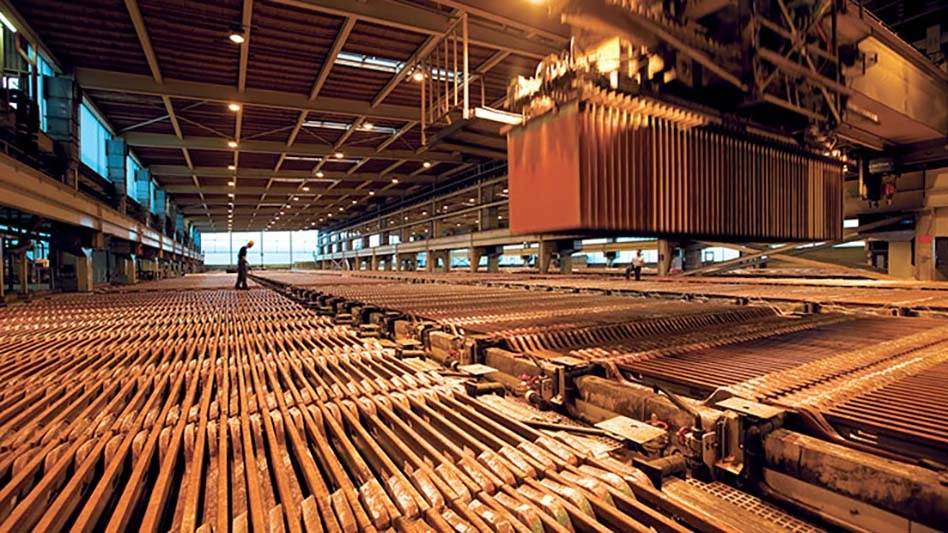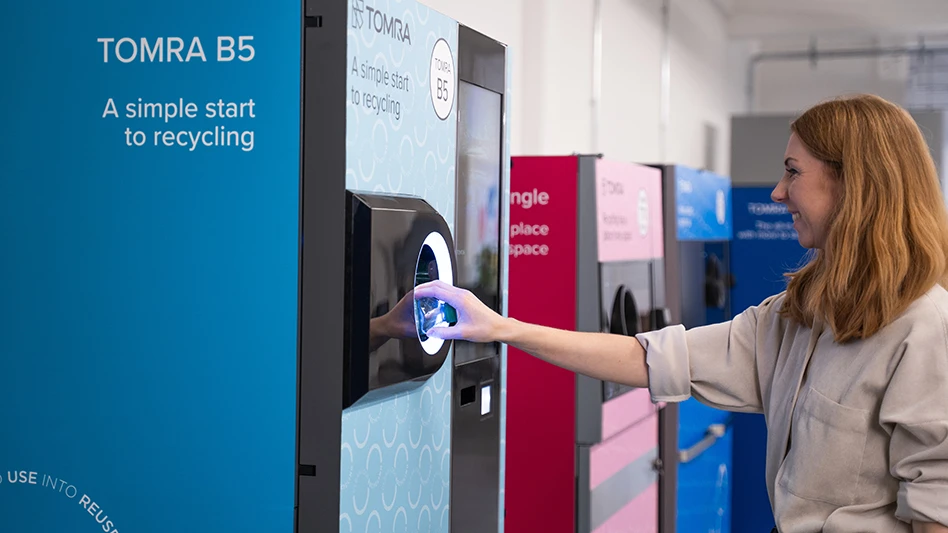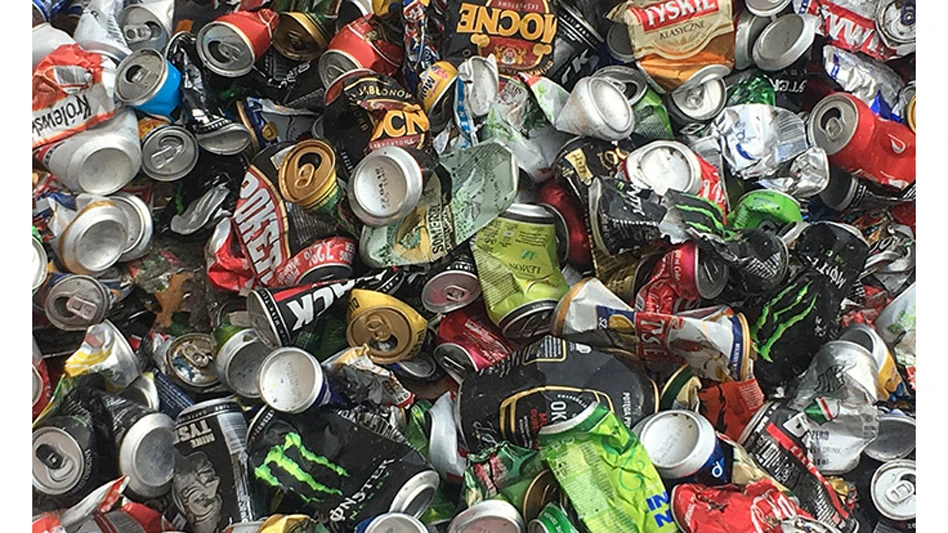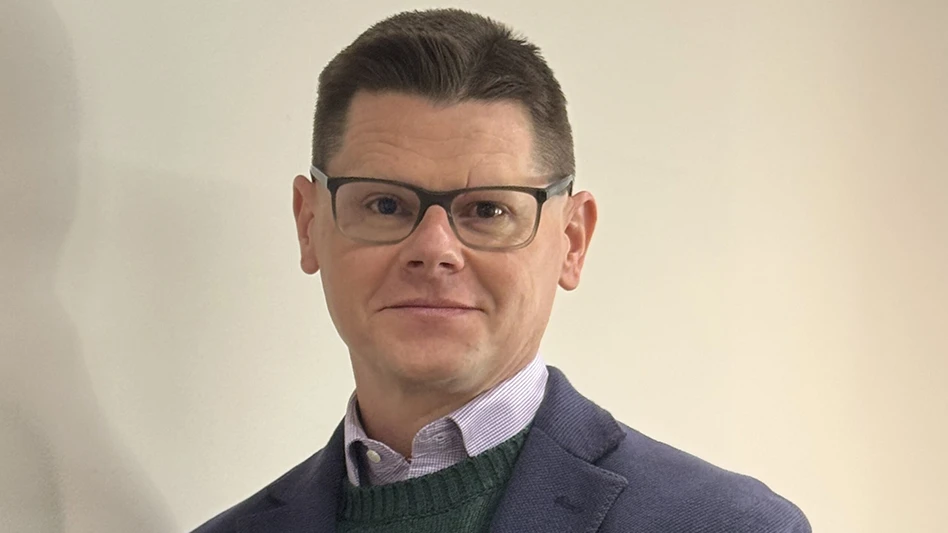
Pictured: A Strautmann BaleTainer on location at an Ingram Micro Distribution GmbH facility in Germany.
Recycling plants and material recovery facilities (MRFs) are well-served by large-volume balers that can compress recovered fiber from numerous different sources.
Equally vital in the paper recycling equation, however, is the role of balers at points of material generation, such as large retail stores, factories and warehouses and distribution centers.
As they do for large recycling plants, baler manufacturers from around the world continue to design and modify baling equipment to best serve the needs of managers of facilities where old corrugated containers (OCC) and other forms of scrap paper are generated.
PACKAGED AND READY
United States-based Harris has been making balers for more than a century, and the company has a product line that reaches up to some of the highest-volume machines available.
Models from the company’s product line find homes not only in MRFs and large paper stock plants, however. Its balers also can be found at places such as the Nelson Packaging Co. Inc. (NPC) plant in the U.S. state of Ohio.
At Nelson Packaging, a Harris HLO-518 AR50 horizontal baler is among equipment on site to bale OCC generated at the firm’s 330,000-square-foot complex. According to a testimonial advertisement prepared for Harris earlier in 2018, Nelson Packaging prepares and fills consumer packaged products for customers from around the world.
The steady stream of materials and supplies shipped in corrugated boxes to Nelson’s Ohio plant means sufficient OCC is generated to quickly cause space-cluttering challenges if the material is not baled and stored promptly.
NPC Chief Operating Officer James Loughrin indicates that from 2000 to 2013, OCC at the plant was handled by either one or two small vertical balers combined with a manual-tie horizontal baler added during that timeframe. “These balers were in operation on two shifts with an average of two employees per baler per shift to operate,” Loughrin says in the testimonial piece.
In 2013, Loughrin and NPC contacted Ken Ely of Lorain, Ohio-based Harris recycling equipment dealer Ely Enterprises “to review options for a single auto-tie baling unit to reduce baling operational labor costs and combine all baling into one building at our site.”
The larger Harris horizontal model “eliminated the three small balers from our site and, more importantly, allowed us to move 10 employees from baling into our packing operations,” states Loughrin.
NPC has continued to grow, however, providing Harris and one of its dealers a second opportunity to equip the firm for its expansion. According to Loughrin, NPC has subsequently added a Harris HLO-6110-AR50 horizontal baler that has kept up with Nelson Packaging’s considerable ability to generate OCC during its workday.
KEEPING GERMANY CLEAN
Points of generation in Europe also are a priority for recycling equipment firms there. In two recent cases, Germany-based Strautmann Umwelttechnik GmbH and Frickingen, Germany-based HSM GmbH + Co. KG have performed installations designed to serve recovered fiber generators.
In Straubing, Germany, Strautmann says its customer Ingram Micro Distribution GmbH’s location there has, for two years, disposed of some 840 tons of old corrugated containers (OCC) annually with one of its BaleTainer automatic balers.
Since using the baler, disposal processes have slimmed down enormously, according to Manfred Reindl, a supervisor at Ingram Micro Distribution, which distributes IT and consumer electronics equipment. “Our time savings are tremendously high,” he comments. “We save seven hours per day by using the BaleTainer. Instead of spending time with disposal, employees can now focus on their core business.”
BaleTainer compacts OCC generated at two storage areas. The baler is centrally positioned and can be filled from both the lower and upper storage areas. This has been critical to the time savings, says Reindl, who adds that employees are also happy about the fully automatic baler.
They can place the packaging from items such as cameras or cell phones into storage bins that are situated directly at source where material accrues. In the lower storage area, an employee drives the full bins to the BaleTainer, where they are tipped into the hopper in less than 30 seconds using a lifting device. From the upper storage area, the boxes fall directly into the BaleTainer via a chute.
The configuration means that even if the upper and lower levels wish to load material at the same time, waiting times can be avoided. The BaleTainer compacts the cardboard with 60 kilonewtons of compression force into 450-kilogram (990-pound) bales. In addition to the fully automatic compaction, the wire-tying and the bale discharge are fully automatic, according to Strautmann. “Before, the manual emptying of a container took two to three minutes; the BaleTainer can do it in 25 seconds,” says Reindl.
Previously, discarded packaging was collected in containers that were picked up in the lower storage area by pallet truck and brought to the compactor. Employees often had to walk long distances to the compactor, sometimes in bad weather conditions, and then manually insert the cardboard boxes into the compactor. The disposal process of a single container took about two to three minutes and the outside compactor also occupied a dock space and involved a monthly rental cost.
In the upper storage area, cardboard was compacted with a vertical baler. Each carton had to be thrown into the baling chamber by hand. Through constant intermediate use of the small baler, employees lost a lot of time performing disposal chores. “That was a huge amount of time—a pointless waste of time,” states Reindl.
Ingram says it also saves on transport costs because of the high density of the OCC bales. The marketing of directly marketable bales is also lucrative, says Reindl. “With the BaleTainer and the uniform disposal containers, we have created order and structure - that was particularly important to us because of [our] many customer visits,” he states.
Reindl cites Günter Komesker, managing director of Strautmann, and Markus Jobst, the sales director for its South-East region, for having given him good advice and having been a pleasure to work with.
JUST WHAT THE DOCTOR ORDERED
In Heidenheim, Germany, HSM is helping Paul Hartmann AG bale both OCC and polyethylene (PE) film scrap generated as byproducts at its medical and hygienic products manufacturing process.
According to HSM, two of its balers—a horizontal HSM HL 4812 and a vertical HSM V-Press 860 S model—are helping make marketable bales made of OCC and PE that weigh 400 kilograms (880 pounds) each.
HSM and Paul Hartmann estimate some 260 tons of OCC and 60 tons of PE are generated at the Heidenheim facility each year.
The Paul Hartmann employees assigned to select new balers, Michael Kormann, head of homecare logistics, and Kornelia Bischof, waste management officer, were dissatisfied with shipping the OCC and PE away loose. They also were unimpressed with the first baler they tested, according to HSM, because it could produce bales of only up to 200 kilograms (440 pounds) in weight.
After additional research, Kormann and Bischof tested (and then purchased) the models supplied by HSM. “The products make a very good impression,” says Kormann, who also liked HSM’s projected low operating costs and its service capabilities. “The purchase price is only one aspect; for us the service also has to be right during the operating phase and the systems have to operate cost-efficiently in the long term,” he comments. “We considered HSM to be best placed to fulfil this.”
The vertical baler in place is used for compressing the PE films. Kormann and Bischof say they were impressed with its sliding door for easy access and liked its automated compressing process that starts on its own when the door is closed. The door also opens automatically after the end of the baling cycle.
According to HSM, its customer also liked the option of PE strapping on its PE bales, which has entailed costs that are 75 percent lower compared to steel wire. “The machine was adapted to our needs and the innovations worked well,” states Kormann.
HSM advised Paul Hartmann not to install a fully automatic baling press, including automatic bale wiring, in Heidenheim for its OCC. The reason: the volume of 260 tons per year does not justify a fully automatic system.
“In the end, we decided to use the HSM HL 4812 semi-automatic baling press. This is the ideal solution for functional and commercial reasons,” says Kormann. “Now, each cardboard bale is manually strapped with four wires in [the] Homecare Logistics department. That works fast and well.”
It has proven ideal that the OCC is delivered to the paper mill that produces new cardboard boxes for Paul Hartmann AG. This reduces purchasing costs and transport costs in what Kormann calls “an almost perfect recycling material loop.”
The buyers of the OCC bales are happy with the new raw material from Heidenheim, adds Kormann. “Correctly sorted, unsoiled, of constant quality and optimally compacted–we supply dream bales,” he states.
Latest from Recycling Today
- Alberta Ag-Plastic pilot program continues, expands with renewed funding
- ReMA urges open intra-North American scrap trade
- Axium awarded by regional organization
- China to introduce steel export quotas
- Thyssenkrupp idles capacity in Europe
- Phoenix Technologies closes Ohio rPET facility
- EPA selects 2 governments in Pennsylvania to receive recycling, waste grants
- NWRA Florida Chapter announces 2025 Legislative Champion Awards





